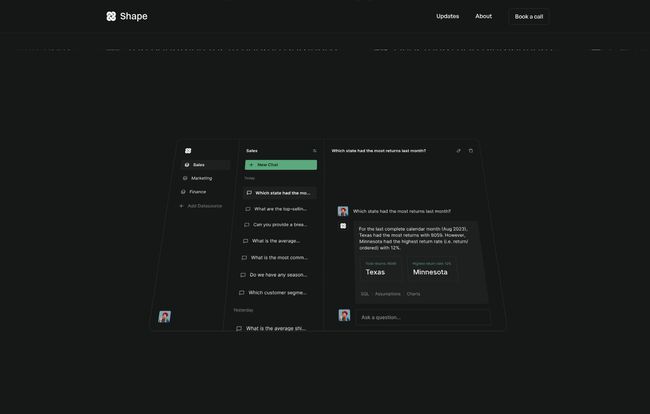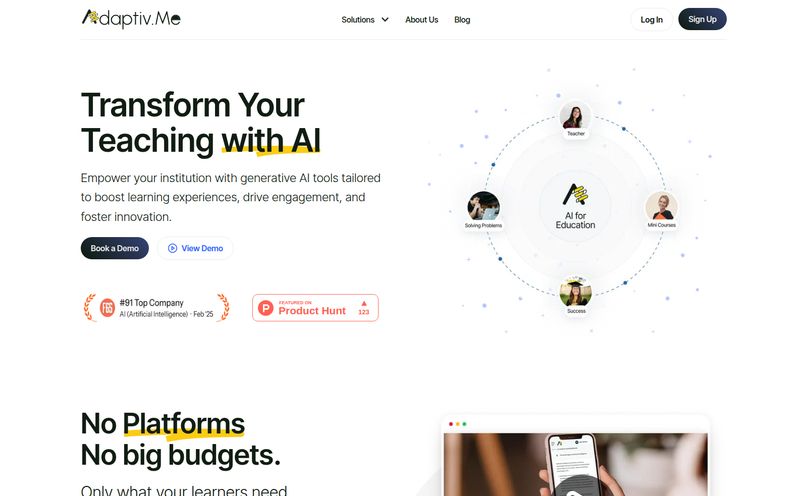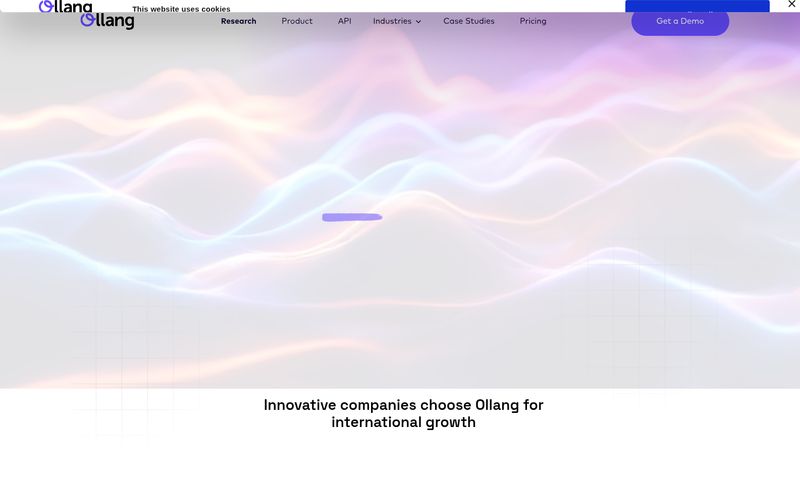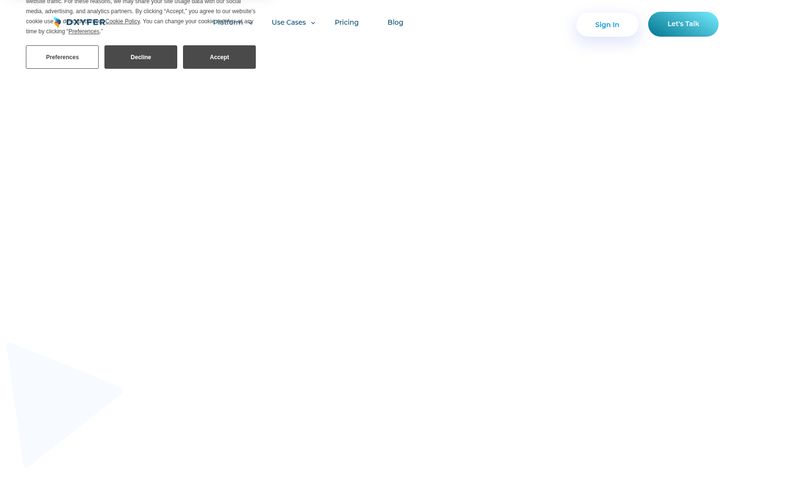If you've ever worked in marketing, product, or any role that isn't specifically 'Data Analyst', you know the pain. You have a simple question. Something like, "Hey, what was our user retention for customers who signed up in Q2?" or "Which marketing campaign drove the most sign-ups last month?"
And so begins the ritual. You file a ticket. You send a Slack message into the void of the #data-requests channel. You wait. And wait. Your data team is brilliant, but they're buried under a mountain of requests. By the time you get your answer, the moment might have passed. It's a bottleneck as old as business intelligence itself.
I’ve been there more times than I can count. It's frustrating for everyone involved. We want to be data-driven, but the data is locked away behind a wall of code and competing priorities. So when I heard about a tool called Shape that claims to be your team's personal AI data analyst, my curiosity was definitely piqued. Could this finally be the thing that bridges the gap?
So, What Exactly is Shape?
In a nutshell, Shape connects directly to your company's database—think Snowflake, BigQuery, Redshift, the usual suspects. But instead of you needing to write complex SQL queries to get information out, you just… ask questions. In plain English. Like you're talking to a person.
It’s designed to be the go-between for your data and the people who need it. The goal is to democratize data access, making every product manager, marketer, or executive capable of pulling their own numbers without having to learn a new programming language or wait in line for the analytics team. It's less like a rigid dashboard and more like having a conversation with your data. A pretty wild concept when you think about it.
Who is This Tool Really For?
I think it's pretty clear this isn't built to replace your senior data scientists. They're still going to be the ones building the complex models and architecting the data warehouse. No, Shape is for the rest of us. It’s for the PM trying to validate a hypothesis for a new feature. It's for the marketing manager trying to figure out which ad creative is actually working. It’s for the CEO who wakes up at 2 AM with a burning question about quarterly growth.

Visit Shape
It’s for the people I call data-curious but code-averse. If you’ve ever found yourself exporting a CSV to manually fiddle with pivot tables in Google Sheets just to get a simple chart, then yeah, you’re the target audience.
The Core Features That Actually Matter
Alright, let's get into the meat of it. What does Shape actually do? A lot of tools make big promises, but execution is everything.
Talking to Your Data in Plain English
This is the headline feature, and it’s the whole point. The image on their site shows a great example: asking “Which state has the most returns from Texas?” The AI is smart enough to understand the nuance there. It’s not just about pulling raw numbers; its about interpreting intent. This natural language query ability is the magic trick that makes the whole thing work. No more fumbling with `SELECT`, `FROM`, and `WHERE` clauses for a simple question.
It’s Not Just an Answer, It's an Explanation
One of my biggest fears with AI tools is that they become a “black box.” You put a question in, an answer comes out, and you have no idea how it got there. That's a recipe for disaster. What I really appreciate about Shape is that it actively works against this. When it gives you an answer, it also provides:
- The SQL it generated: This is huge. For one, it lets your technical team members quickly verify the logic. For another, it's a fantastic learning tool for those of us who want to get better at SQL.
- Assumptions and Caveats: The AI will literally tell you, "I'm assuming 'active user' means someone who logged in within the last 30 days." This transparency is critical for building trust in the data.
This approach turns the AI from a mysterious oracle into a transparent assistant, and that makes all the difference.
Seamless Integration into Your Workflow (Hello, Slack!)
Let's be honest, if a tool doesn't fit into your existing workflow, it won't get used. Shape seems to get this. Their Slack integration is a game-changer. You can literally add the Shape bot to a channel and ask your data questions right there, in the middle of a conversation. No context switching, no opening a new tab. This is how you drive adoption. Instead of saying "I'll go pull that number," you just type `@Shape what were our sales in Minnesota last week?` and get an answer in seconds. They also have a Microsoft Teams bot for Enterprise clients.
Visualizations on Demand
Answering a question with a wall of text or a table is one thing, but Shape takes it a step further by automatically generating data visualizations. It'll create bar charts, line graphs, and other visuals to help you actually see the trend. This saves that tedious step of getting the raw data and then having to plug it into another tool to make it understandable. It's a small thing that has a big impact on efficiency.
For the More Ambitious: API and Embedding
This is where things get really interesting for dev teams. Shape provides API access, which means you can build its AI-powered analytics directly into your own applications or internal tools. Imagine having a customer-facing dashboard where your clients can ask natural-language questions about their own usage data. That's some powerful stuff, and it moves Shape from just an internal tool to a component of your actual product.
My Honest Take: The Good and The Not-So-Good
Okay, no tool is perfect. After digging through what Shape offers, here's my unfiltered take. The big win here is speed and accessibility. It demolishes the ad-hoc query queue that plagues so many data teams. It empowers non-technical people to self-serve, which not only gets them answers faster but also frees up the data analysts to work on much deeper, more strategic projects. The fact that it learns over time and clarifies its assumptions is a huge plus for accuracy and trust.
On the flip side, you can't ignore the price. While not outrageous, it's a recurring subscription that teams need to budget for. For a tiny bootstrapped startup, even the entry-level plan might be a stretch. The other point, which is true of any AI tool, is that you can’t just let it run wild without any human oversight. I'd still want a data-savvy person to periodically review the queries and answers, especially for mission-critical reporting. It’s an incredibly smart assistant, but it's not a substitute for human expertise and intuition. Not yet anyway.
Let's Talk Money: Shape's Pricing Tiers
Pricing is always a major factor, so here’s a quick breakdown. They offer three main tiers, and all come with a 30-day money-back guarantee, which is a nice touch.
| Plan | Price | Key Features |
|---|---|---|
| Starter | $49 / month | Includes 2 users. Good for small teams or startups just getting started with data analysis. |
| Team | $499 / month | Includes 20 users. Aimed at growing companies where data access is becoming a wider need across departments. |
| Enterprise | Custom | Unlimited users, MS Teams bot, and white-glove onboarding. For large organizations. |
Frankly, the Starter plan at $49 for two users feels like a very accessible entry point. The cost per additional user is $24.95/pm, so you can scale it as you grow. The jump to the Team plan is significant, but it makes sense if you have multiple departments needing access.
Is Shape the Right Fit for Your Business?
So, the big question. Should you get it? My answer is a firm... it depends.
If your data team is drowning in requests for simple stats, and your product and marketing teams feel like they're flying blind, then yes. Shape seems custom-built to solve this exact problem. It could fundamentally change your company's culture around data for the better.
If you're a team of one, or your entire team is comfortable writing SQL for every little thing, then maybe it's overkill. But for most modern, growing companies, I suspect the former scenario is far more common. This is a tool designed to remove friction, and in business, friction costs money.
My Final Thoughts on Shape
I'm genuinely optimistic about tools like Shape. For years, we've talked about making businesses more data-driven, but we've often failed to provide the right tools for the job. We buy complex BI platforms that require extensive training and implementation, and they end up being used by the same 5% of people in the company.
Shape feels different. It's built on conversation, which is how humans naturally operate. By meeting users where they are—in Slack, using plain English—it has a real shot at achieving the holy grail: true data democratization. It's not about firing your analysts; it's about elevating them so they can focus on the hard stuff. And that’s a future I’m excited about.
Frequently Asked Questions about Shape
- 1. Can Shape handle complex data queries?
- Yes. Under the hood, it's capable of generating advanced SQL, including things like complex joins and unions, to answer nuanced questions.
- 2. Do I need to know SQL to use Shape?
- Absolutely not. The entire premise is built around asking questions in natural, plain English. No coding knowledge is required.
- 3. What databases and platforms does Shape integrate with?
- It connects with major data warehouses like Snowflake, Google BigQuery, and Amazon Redshift, as well as databases like MySQL. It also works with dbt and integrates directly into Slack and Microsoft Teams.
- 4. How secure is Shape with my company's data?
- Security is a top concern. Shape is SOC 2 Type I certified, which is a standard for data security and privacy, ensuring they have strong controls in place to protect your data.
- 5. What if I need to add more people to my plan?
- Both the Starter and Team plans allow for additional users at a cost of $24.95 per user per month, making it flexible as your team grows.
- 6. Can I embed Shape's analytics into my own application?
- Yes, Shape provides API access and embeddable components that allow developers to build the AI analyst experience directly into their own products or internal dashboards.



